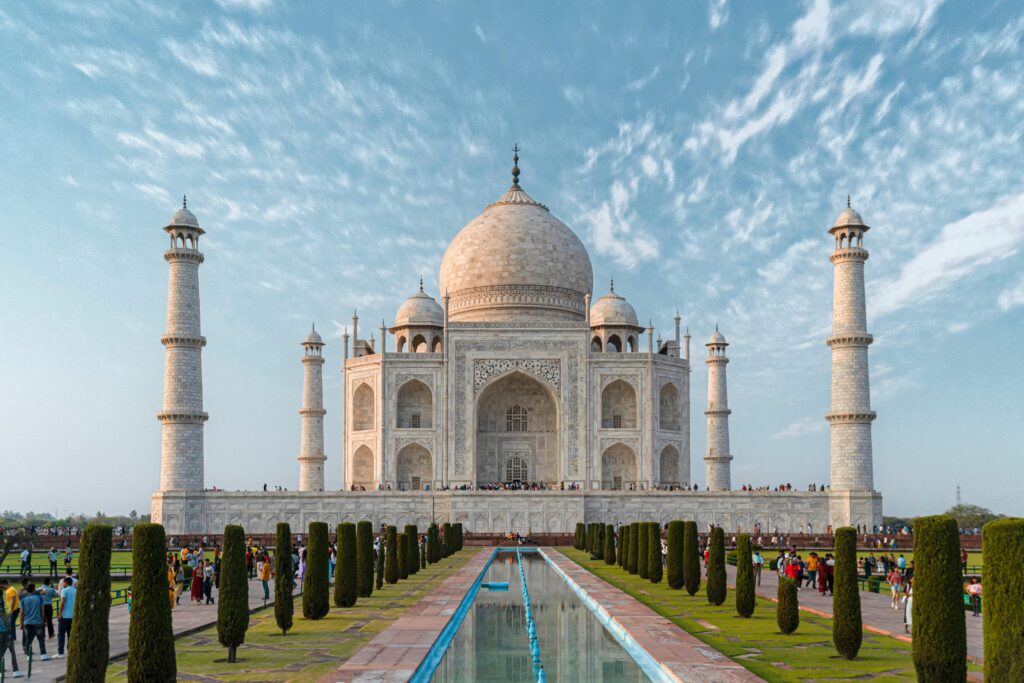While travelers from Europe, Canada, Mexico, and beyond increasingly give American shores a wide berth, Indians are bucking the trend—visiting the United States in unprecedented numbers. Recent tourism data reveal a striking surge in Indian arrivals even as “MAGA” rhetoric, stricter enforcement postures, and travel‑warning chatter dampen global enthusiasm for U.S. trips. What’s driving this paradox, and is the U.S. poised to lose its status as the world’s premier travel destination?

A Meteoric Rise in Indian Visitors
- 48% Surge Over Pre‑Pandemic Levels: From January to October 2024, nearly 1.9 million Indian nationals crossed into the U.S.—a 48% jump compared to the same period in 2019. This growth places India as the sixth‑largest source of international arrivals, leapfrogging traditional feeder markets such as Japan and South Korea.
- High‑Spending Tourists: In 2022, Indians’ tourism receipts totaled $13.3 billion, with average spending of $5,200 per visitor—well above the global average. Early indicators for 2024 suggest that total Indian tourism dollars could exceed $20 billion once final figures are tallied.
- Diaspora and VFR Travel: A significant portion of Indian travelers visit friends and relatives (VFR), including students on F‑1 visas and professionals on H‑1B permits. Robust air connectivity—thanks to new non‑stop routes between Mumbai, Delhi, and Tier II Indian cities—and streamlined e‑visa processes have further lowered barriers to travel.
Decline from Other Markets
- Global Pullback: A recent forecast from Tourism Economics revised expected U.S. inbound growth for 2025 from +9% to –9.4%, driven by steep declines from Canada (–31.9% by land), the U.K., and Germany. In March 2025 alone, international arrivals were down 11.6% year‑over‑year.
- Neighboring No‑Shows: Canadian visitors fell by 31.9% at land crossings and 13.5% by air, while Mexican arrivals dropped 23%—reflecting both economic headwinds and unease over mixed messages on border enforcement.
Why Indians Keep Coming
- Rising Affluence and Aspirations: India’s burgeoning middle class—projected to exceed 600 million by 2030—craves international experiences, U.S. higher education, shopping deals, and medical tourism.
- Business and Education Ties: Tech‑sector growth fuels the need for frequent business travel. Meanwhile, the U.S. remains the top study destination for Indian students, with over 200,000 enrolling in American colleges in 2024 alone.
- Visa Facilitation Efforts: The U.S. Embassy in New Delhi has expanded its consular footprint, adding e‑appointments and weekend visa slots, reducing wait times from months to mere weeks for many categories.
- Cultural and Family Connections: High rates of naturalization among earlier migrants mean robust family networks in metro areas like New York, San Francisco, and Chicago—making the U.S. feel welcoming despite political noise.
The MAGA Conundrum
- Fierce Rhetoric vs. Economic Realities: Trump‑style comments branding foreigners as “scavengers” and threats of mandatory registration for stays over 30 days—though unfounded—have spooked many traditional markets. Yet for Indian travelers, pragmatic factors (education, work, family) often outweigh transient political anxieties.
- “Birth Tourism” Worries: MAGA hardliners periodically rail against “birthright citizenship tourism,” fueling proposals for new visa restrictions on pregnant women. Legal experts note these measures face constitutional hurdles, but the debate contributes to the broader climate of uncertainty.

Economic Stakes and Industry Response
- Potential $64 Billion Shortfall: A sustained downturn from non‑Indian markets could cost the U.S. up to $64 billion in tourism revenue in 2025—offset only partially by continued Indian growth.
- Streamlining Travel: Industry leaders urge Washington to accelerate visa processing, modernize customs procedures, and clarify that no short‑term visitor registration requirements exist—steps seen as critical to retaining and recapturing lost visitors.
- Marketing Pivot: Several state tourism boards are ramping up campaigns aimed at India’s key source cities, highlighting safety, diversity, and “authentic” American experiences to counter negative headlines.
Frequently Asked Questions
Q: Why are Indian visitors growing while others decline?
A: India’s expanding middle class, business and education ties, improved visa processes, and strong diaspora networks drive sustained growth—even as political rhetoric deters more casual tourists.
Q: Are non‑Indian tourists actually canceling trips?
A: Yes. European, Canadian, and Mexican arrivals all saw double‑digit declines in early 2025 amid trade‑war tensions, anti‑immigrant messaging, and competing destinations aggressively courting those visitors.
Q: Does MAGA rhetoric affect travel policy?
A: Officially, no. No new requirement exists to register tourists staying under 90 days. Yet public statements by prominent figures can deter potential visitors who fear abrupt policy changes.
Q: How can the U.S. tourism industry respond?
A: By advocating for faster visa turnarounds, clearer communication on entry requirements, and targeted marketing in growth markets like India and Southeast Asia.
Q: Will Indian growth offset global losses?
A: Unlikely fully. Even with record Indian arrivals, the sheer volume lost from traditional markets means net international tourism receipts are projected to decline in 2025.
Q: Are there safety concerns deterring other tourists?
A: Perceptions of rising crime in some U.S. cities have compounded political anxieties for European and Canadian travelers—but Indian visitors often prioritize their specific travel purposes over general safety headlines.
Q: What long‑term trends should we watch?
A: Watch for expanded direct flight routes between mid‑tier Indian cities and U.S. hubs, further digitization of visa and customs processes, and evolving political climates that either reassure or alarm potential visitors.

Conclusion
The paradox of booming Indian tourism set against a broader international pullback illustrates today’s complex travel landscape. While MAGA‑infused rhetoric and policy uncertainty keep many “turning back on the U.S.,” pragmatic, well‑heeled, and purpose‑driven Indian travelers continue to view America as a top destination for education, business, and family. For U.S. tourism to reclaim its global preeminence, policymakers and industry players must build on India’s momentum while repairing bridges with other traditional markets—balancing security with hospitality in an increasingly competitive world.
Sources The Times of India


